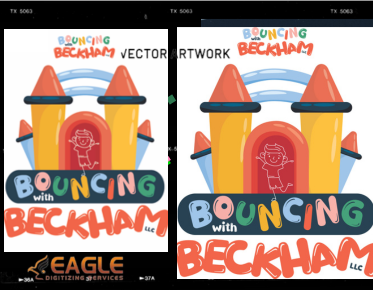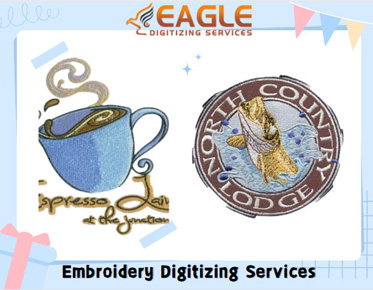Step-by-Step Guide on How to Effectively Use Screen Printing Kits
Screenprinting, an art form as timeless as it is versatile, has long been favored by DIYers for its ability to produce bold, vibrant prints on a variety of surfaces. Whether you’re looking to customize t-shirts, create unique artwork, or launch a small business, screen printing kits are an accessible way to explore this craft. These kits provide everything needed for success, from tools to techniques, offering a rewarding hands-on experience for crafters of all levels. This guide will walk you through the essentials of using a screen printing kit, ensuring that your creative projects come to life with professional results.
What Makes Screen Printing Kits the Perfect Choice for DIYers
Screen printing
kits are a perfect choice for DIYers due to their simplicity and adaptability.
They bring professional-grade printing to your fingertips, with user-friendly
tools and instructions that make even first-timers feel like seasoned pros.
Kits allow you to personalize a wide array of items, from clothing to home
décor, with high-quality, durable prints. The ability to create custom designs
with relative ease makes these kits indispensable for those looking to add a
personal touch to their creations.
Setting Up Your Screen Printing Kit for Success
Creating
an Ideal Workspace for Screen Printing Projects
A cluttered
workspace can quickly lead to frustration, especially with the meticulous
nature of screen printing. Find a well-lit, flat surface free of distractions.
Ensure the area is well-ventilated, especially if you’re using inks that
release fumes. A spacious table or countertop with enough room for all your
tools and materials will make the process smoother and less stressful.
How
to Properly Assemble Your Screen and Frame
Assembling the
frame and screen involves stretching the mesh tightly over the frame, and
securing it with staples or clamps. This ensures the mesh stays taut and
provides the cleanest print. Take care to position the screen evenly, ensuring
no wrinkles or sagging, as this can affect the quality of your print.
Preparing
Your Screens and Mesh for First-Time Use
New screens often
come with a protective coating that needs to be removed before use. Clean your
mesh with a degreaser to eliminate any dust, oils, or contaminants. This helps
the emulsion bond properly. Once cleaned, it’s ready to be coated with
emulsion, setting the stage for your stencil.
Setting
Up Your Ink Station and Tools for a Smooth Workflow
Your ink station
should be equipped with all the essentials: your inks, squeegees, mixing tools,
and rags. Keep a water source nearby for easy cleanup, and lay down disposable
surfaces or newspapers to catch any spills. This will help maintain a
streamlined process as you work.
Preparing Your Design for Screen Printing
How
to Choose the Right Design for Your Screen Printing Project
Not all designs
are suitable for screen printing. Simplicity is key, as overly detailed designs
with fine lines can be difficult to print with a screen. Opt for bold,
high-contrast designs that will stand out once printed. Vector images are ideal
because they can be scaled without losing quality, and they work well for
creating clean, crisp lines.
Creating
or Sourcing Designs for Screen Printing Kits
Whether you’re
designing your own graphics or sourcing them from online resources, be sure
that the design is in a high-resolution format. Many screen printers prefer
vector-based designs because they offer sharp lines and are easy to scale. If
you’re new to design, online marketplaces and free design tools can be a
goldmine for inspiration and ready-made graphics.
The
Importance of Proper Design Sizing and Placement
Once you have
your design, size it appropriately for your print surface. Consider the
dimensions of your screen and how the design will fit onto the material you’re
printing on. Proper alignment is key, especially for projects like t-shirts,
where centering the design can be the difference between a professional look
and an amateurish one.
How
to Transfer Your Design onto the Screen
The most common
method of transferring a design is by printing it onto transparent film. The
film is then placed onto the emulsion-coated screen and exposed to light,
creating a stencil of the design. Ensure the design is properly aligned to
avoid misprints.
Choosing the Right Ink for Your Project
Understanding
Different Ink Types: Plastisol, Water-Based, and More
Choosing the
right ink for your project is crucial. Plastisol
ink is a popular choice because it sits on top of the fabric, providing
vibrant colors and durability. Water-based
inks, on the other hand, are more eco-friendly, soak into the fabric, and
offer a softer feel. Specialty inks, such as discharge inks and high-density
inks, can add unique effects, but they often require additional skills.
Selecting
the Right Ink for Your Printing Surface
Each surface
requires a different ink type. For example, fabric requires plastisol or
water-based inks, while wood or metal may need special formulations. Always
check the manufacturer's recommendations for surface compatibility.
Mixing
Ink for the Perfect Consistency
Ink consistency
is essential for achieving a smooth, clean print. Too thick, and the ink may
clog the mesh; too thin, and you may get inconsistent results. Adjust the ink
with a reducer if necessary, and test it on a scrap piece of material to ensure
the perfect flow.
How
to Avoid Common Ink Application Problems
Common ink
problems include streaking, inconsistent coverage, or smudging. To avoid these
issues, ensure your squeegee is the correct size and that you’re applying even
pressure. It’s also important to avoid overloading the screen with too much
ink.
Coating and Exposing the Screen
How
to Coat Your Screen with Emulsion Like a Pro
Coating the
screen with emulsion requires precision. Pour the emulsion onto the screen and
spread it evenly with a coating applicator. The goal is to create a smooth,
uniform layer that will hold your stencil during exposure.
Exposing
the Screen to Light – Step-by-Step Process
Place your
transparency with the design on top of the emulsion-coated screen. Expose the
screen to a light source (usually a UV light box) for a specific period,
depending on the emulsion used. Except in areas where the architecture prevents
it, the light hardens the emulsion. Rinse the screen with water, and your
stencil is ready.
What
to Do if Your Exposure Doesn’t Work as Expected
If the design
doesn’t appear or has issues, adjust your exposure time. Too much exposure can
over-harden the emulsion, blocking parts of the stencil, while too little can
result in incomplete images. If necessary, coat the screen again and try the
exposure process once more.
Troubleshooting
Exposure Problems and How to Fix Them
Exposure problems
are often due to improper light or exposure times. If the stencil is faint or
blurry, the exposure time was too short; if it’s overly dark or no design
appears, it is likely overexposed. Fine-tune the process based on trial and
error.
Aligning and Positioning Your Design
How
to Align Your Design Perfectly on the Screen
Aligning the
design on the screen is crucial for accuracy, especially with multi-color
projects. Use a ruler or registration marks to ensure that your design is
placed precisely on the screen before printing.
Using
Registration Marks for Multi-Color Projects
For multi-color
projects, you’ll need to use registration marks. These marks guide the
placement of each color layer, ensuring they line up perfectly. This is
especially important for detailed designs that require precise color placement.
The
Best Techniques for Positioning Your Print on Different Surfaces
When positioning
your print, whether on fabric, paper, or other surfaces, always ensure the
screen is flat and aligned with the substrate. For fabric, consider using a
press to hold the material in place.
Mastering the Squeegee for Smooth Printing
How
to Hold and Use the Squeegee for Consistent Results
One of the most
crucial equipment for screen printing is the
squeegee. Hold it at a 45-degree angle and apply consistent, firm pressure as
you pull it across the screen. The angle and pressure will determine the amount
of ink applied and the smoothness of the print.
Perfecting
the Squeegee Pressure and Angle
The angle and
pressure of the squeegee affect the ink flow. Too much pressure will push too
much ink through the mesh, while too little pressure may result in incomplete
prints. Practice adjusting the angle to find the right pressure for each
design.
Dealing
with Uneven Ink Flow or Streaks
If you’re
noticing streaks or uneven ink flow, check your squeegee technique and ink
consistency. Make sure the screen is clean and free of any dried ink or debris.
Experiment with the pressure to achieve even ink distribution.
Printing Techniques for Different Surfaces
Screen
Printing on Fabric – Tips for T-Shirts, Hoodies, and More
Screen printing
on fabric, such as t-shirts and hoodies, requires the right ink and temperature
for curing. Preheat the fabric to remove moisture, and ensure the fabric lies
flat to avoid misprints. Always test your design before proceeding with a full
batch.
How
to Print on Paper and Create Stunning Art Prints
When printing on
paper, opt for a thinner mesh screen to capture finer details in your design.
Paper absorbs ink differently than fabric, so adjusting ink consistency is key
to achieving smooth, vibrant results.
How
to Print on Non-Traditional Surfaces Like Wood and Glass
Printing on
non-traditional surfaces like wood or glass requires specialty inks. Wood, for
example, may absorb ink unevenly, so pre-treating the surface can help. Glass
may need a primer to ensure the ink adheres.
Dealing
with Different Texture Challenges in Screen Printing
Different
textures, from fabric to wood, require unique strategies. For textured
surfaces, use thinner ink layers and multiple passes with your squeegee to
ensure even coverage.
Curing Your Prints for Lasting Results
Why
Curing Is Essential for Screen Printing Success
Curing is vital
for ensuring that the print lasts. Without proper curing, the ink may peel or
fade, especially when exposed to heat or wear. The curing process solidifies
the ink, bonding it to the surface for durability.
How
to Cure Your Prints Using Heat Presses or Ovens
To cure your
prints, use a heat press or a drying oven set to the appropriate temperature
for the type of ink used. Ensure the print is heated thoroughly to the right
temperature for the ink to bond.
Air
Drying vs. Heat Drying – Which Is Best for Your Projects?
While air drying
is an option for some projects, heat drying is typically preferred for a
durable, long-lasting finish. Heat press drying is particularly important for
fabric, as it ensures the print will withstand multiple washes.
How
to Test if Your Print Is Fully Cured
To test if your
print is fully cured, perform a simple scratch test. If the ink doesn’t smudge
or come off when scratched lightly, it’s fully cured.
Mastering screen printing takes time, practice, and patience. With the right tools, techniques, and dedication, you can unlock the full potential of your screen printing kit, creating vibrant, lasting prints on a variety of materials. Whether you’re pursuing it as a hobby or building a small business, screen printing allows for endless creativity and the satisfaction of bringing your designs to life.



.png)